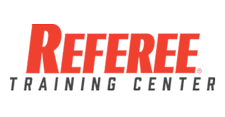It’s that time of month again: your monthly association board meeting. Officers have prepared reports, contacted members, gathered information and set an agenda in preparation.
With so much advance thought and planning, it’s hard to imagine that some meetings get off course and fail to accomplish everything that the officers had hoped for — but they frequently do. How do meetings get off track? How can you increase the productivity of your meetings? Just follow some simple “dos and don’ts.”
DO: Set an agenda that is realistic and thorough, and circulate it in advance. That gives your officers a clear notion of the business to be covered and how the meeting is to progress.
DON’T: Make your agenda unrealistic. If there is too much business to be covered in the allotted time, either you won’t cover it anyway, or your meeting will run agonizingly long. Be mindful of the fact that your board has donated their time and doesn’t want to be in a meeting all night. Often routine business can be handled by sub-committees, freeing up valuable time in your meetings.
DO: Stick to your agenda. Members have prepared reports and comments for specific areas to be covered. Keep your meetings on track so that everyone knows what’s coming next.
DON’T: Allow any one person to “hijack” the meeting by inserting a pet project or derailing the train of thought. Your president must be strong enough to diplomatically get things refocused fast. Encourage your members to suggest items for inclusion on the agenda well in advance of the meeting. If they don’t get scheduled due to time or other limitations, make sure they get added the next time.
DO: Circulate routine reports — like the treasurer’s report or the membership report — prior to the meeting by email. That will allow all members to review them and speed approval at the meeting.
DON’T: Inundate your board with several different pre-meeting emails. Too many emails reduce the importance and notice of each one. A good president will make sure all regular reports are in his or her hands at least several days before the meeting so that he or she can attach them all to one email that board members can anticipate and concentrate on. That also saves time at the meeting, avoiding the distraction of passing out untold numbers of printed pages. Make sure you encourage board members to review each report prior to the meeting for speedy approval.
DO: Keep all meeting participants to focus on the business at hand so that decisions can be made in a timely fashion without multiple explanations.
DON’T: Allow side conversations or socializing once the meeting has begun. Distractions cause delays. Participants who aren’t paying attention to the main order of business are discourteous and ill prepared to vote. Make sure your leadership is strong enough to demand that attention stays focused on agenda items. Nothing causes hard feelings faster than having to explain something to someone who simply wasn’t paying attention.
DO: Allow for some socializing time, just not during the meeting.
DON’T: Hold your meetings in public places like restaurants where distractions are plentiful. Waitresses aiming to please often stop meetings cold when they get drink orders or pick up dirty dishes. If you want to grab a bite or a beverage with the gang, do it after the meeting.
DO: Spread the responsibilities around — it gives everyone a sense of ownership in your organization. There’s no reason that only officers should get the “big” jobs; get other board members in on the action, too.
DON’T: Assign a task to someone who clearly isn’t ready for it just to make them feel a part of things. You want to groom them for success, not failure. Try pairing the rookies with an experienced vet to get the most out of them
Successful meetings aren’t magic, they’re made. Make your next meeting successful with proper planning.





